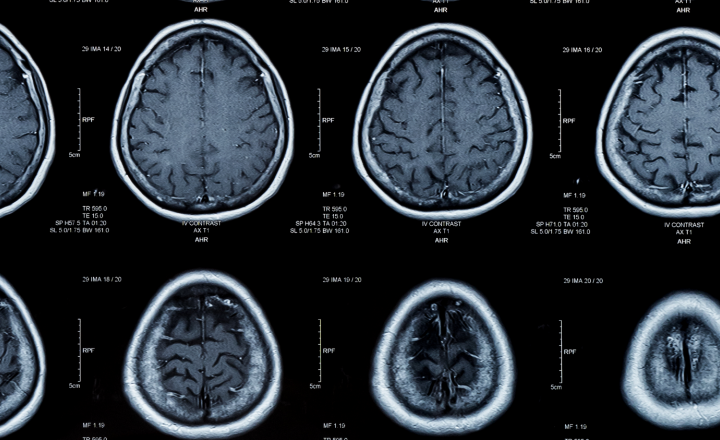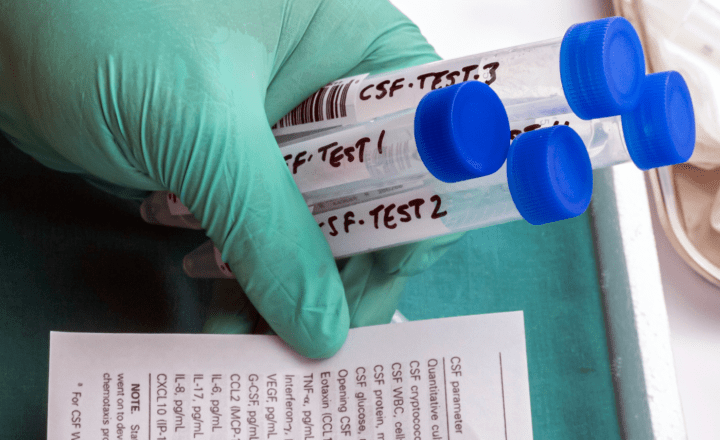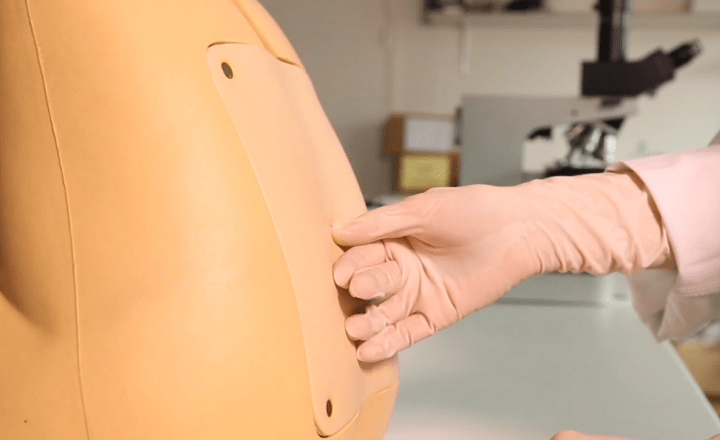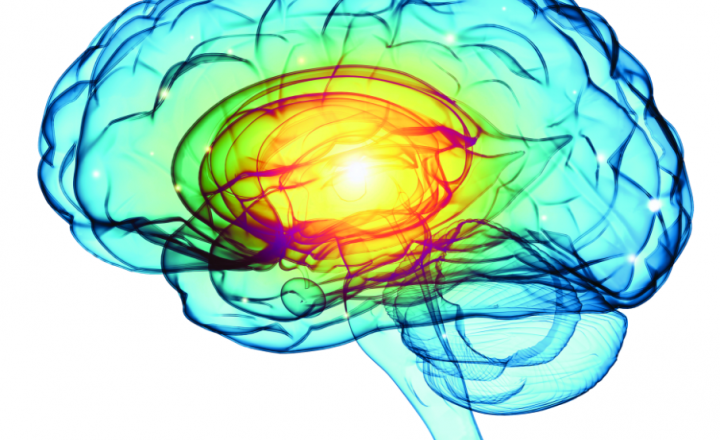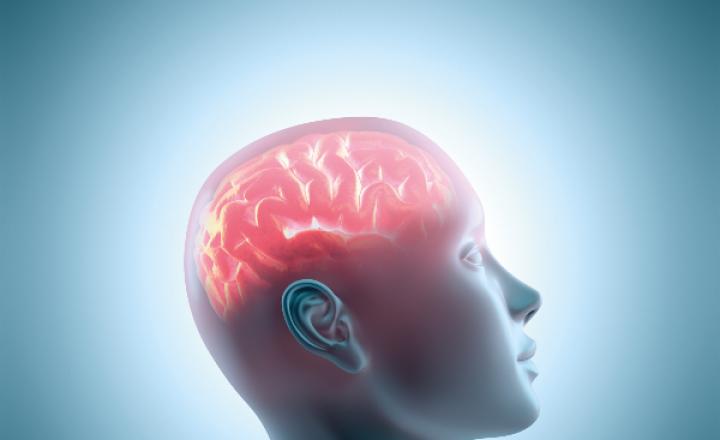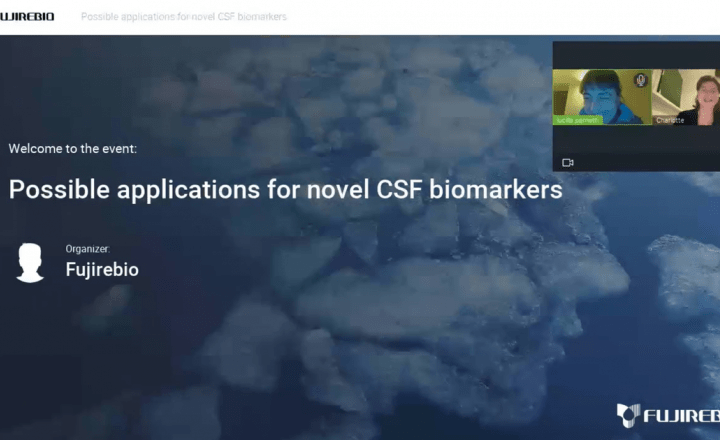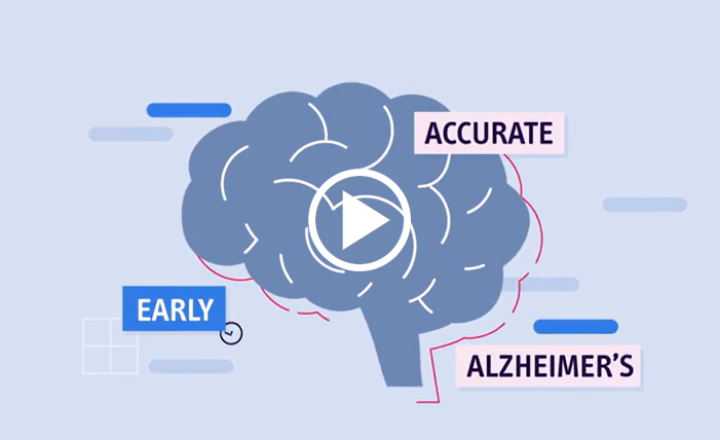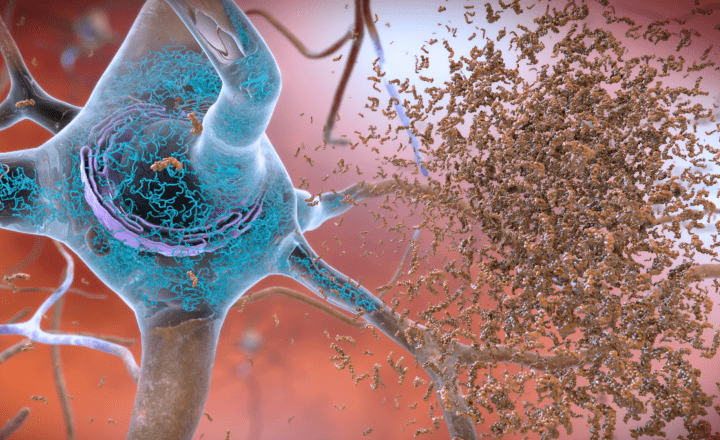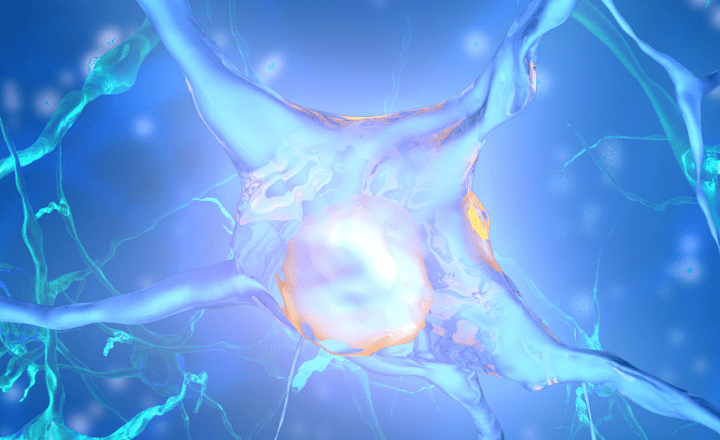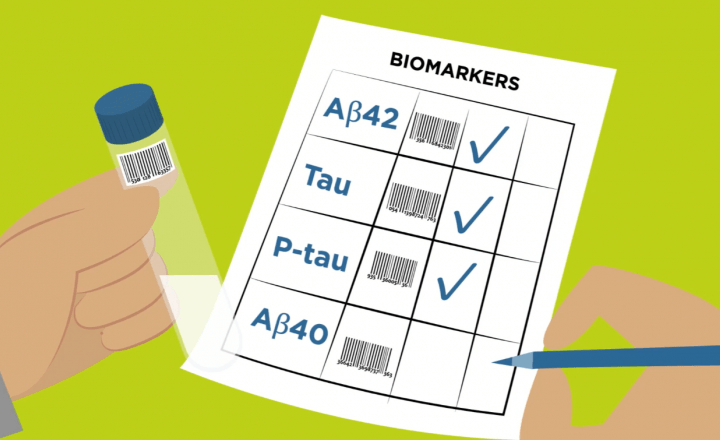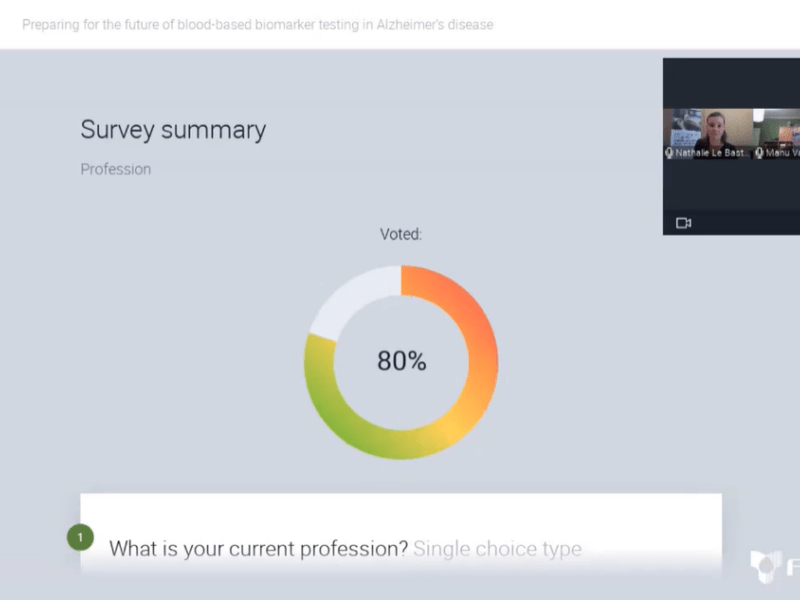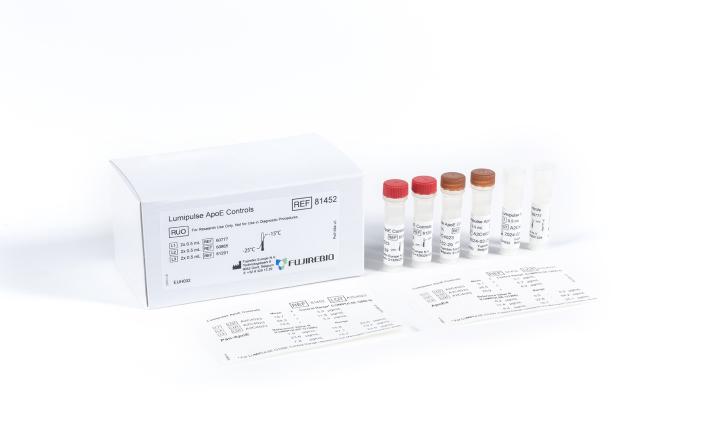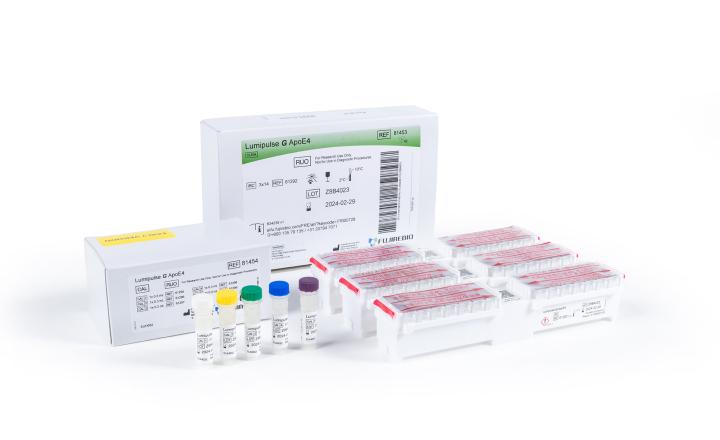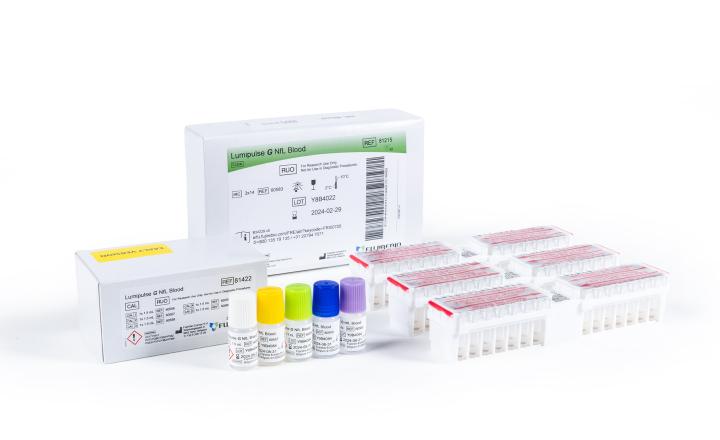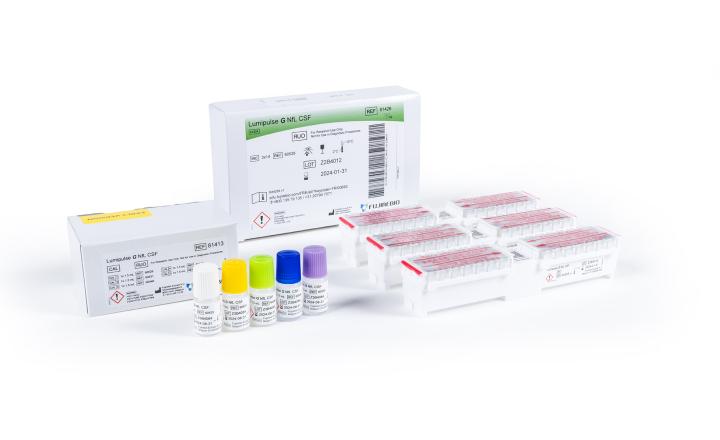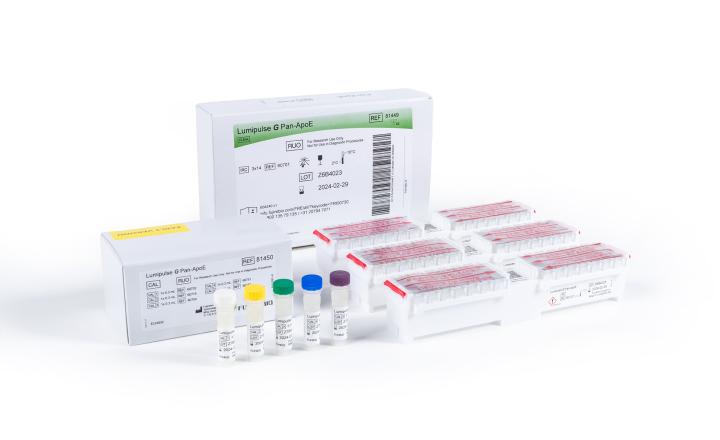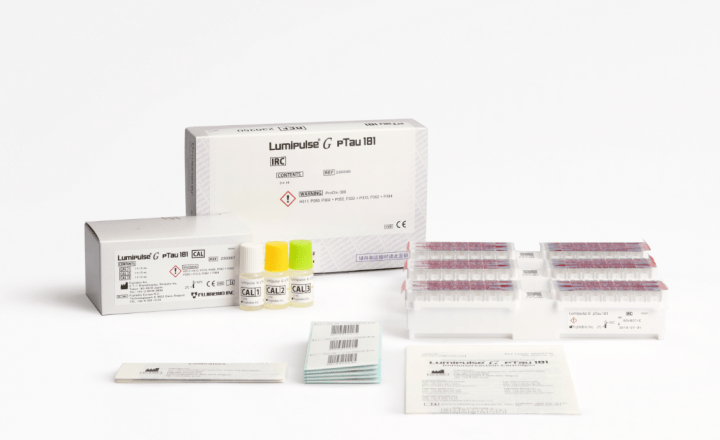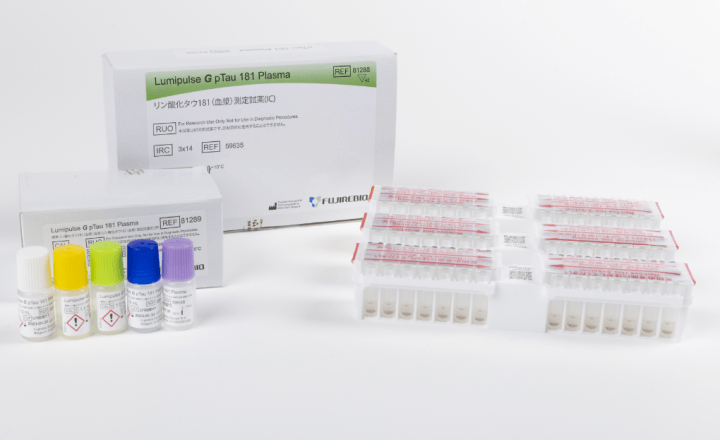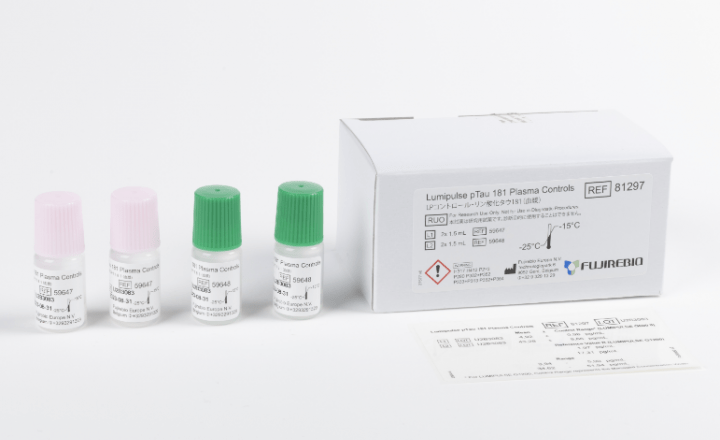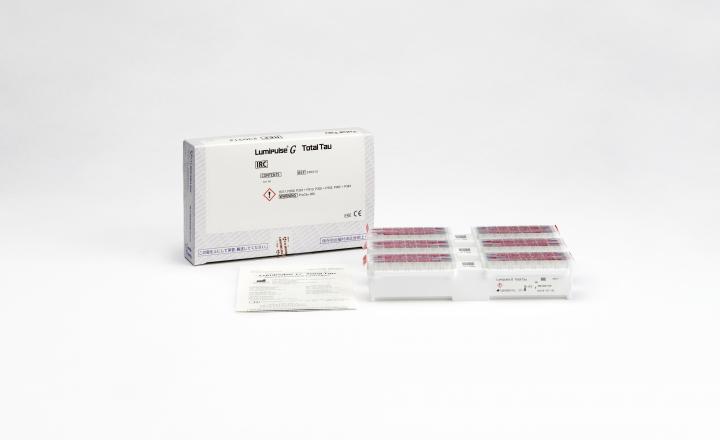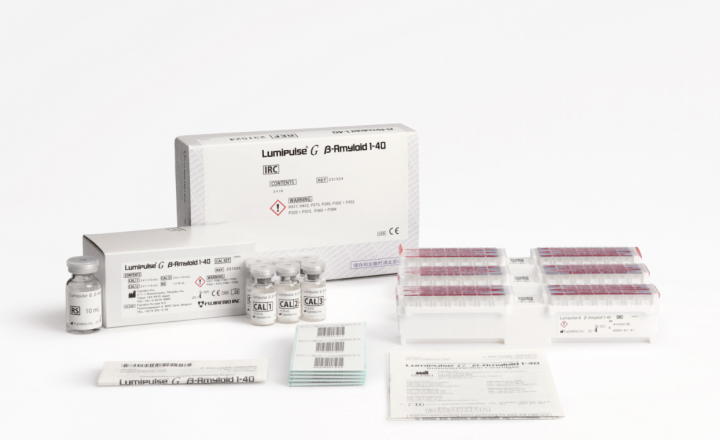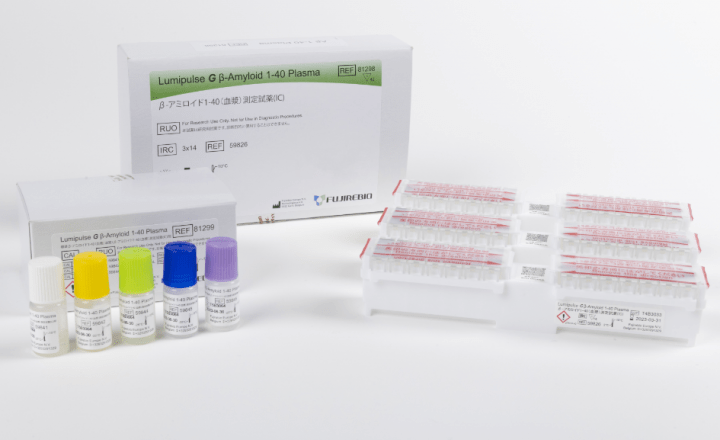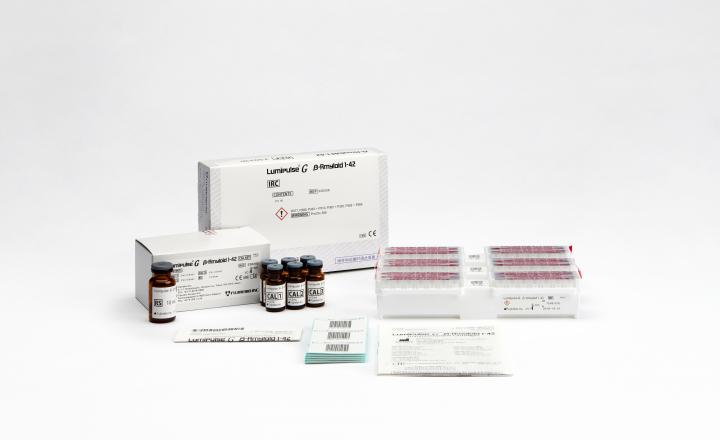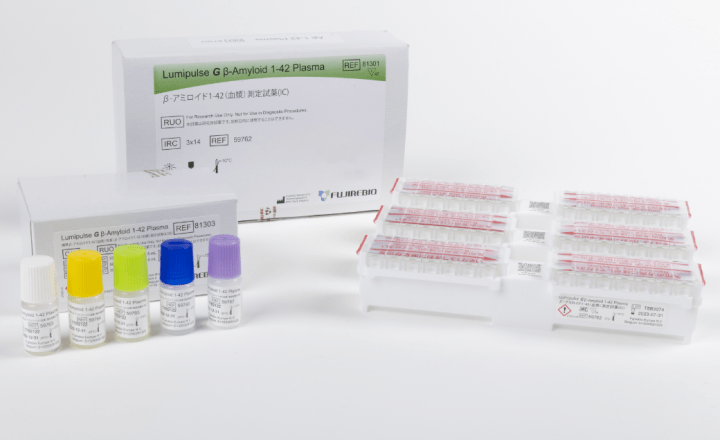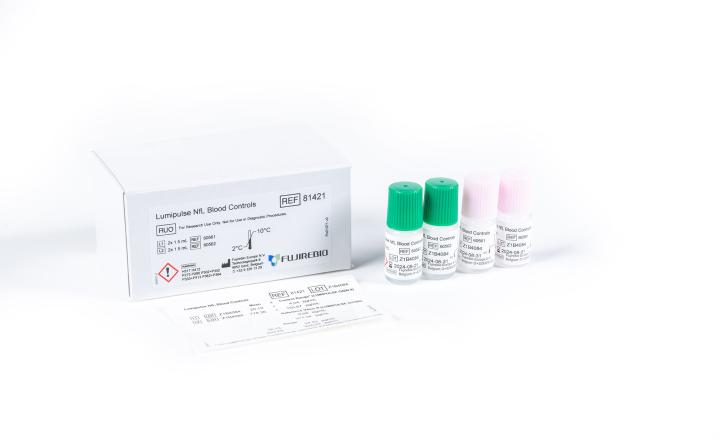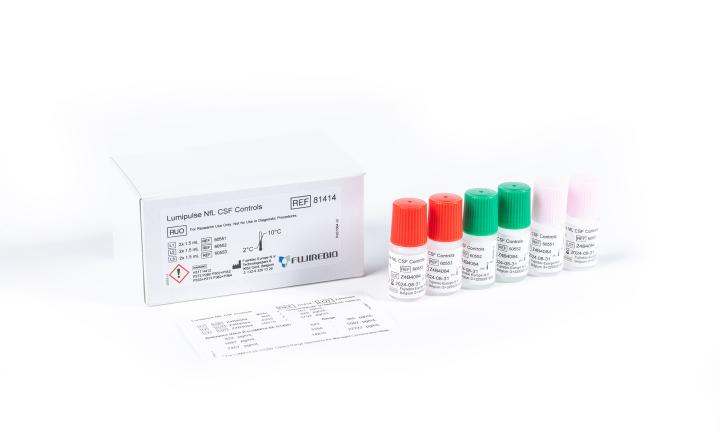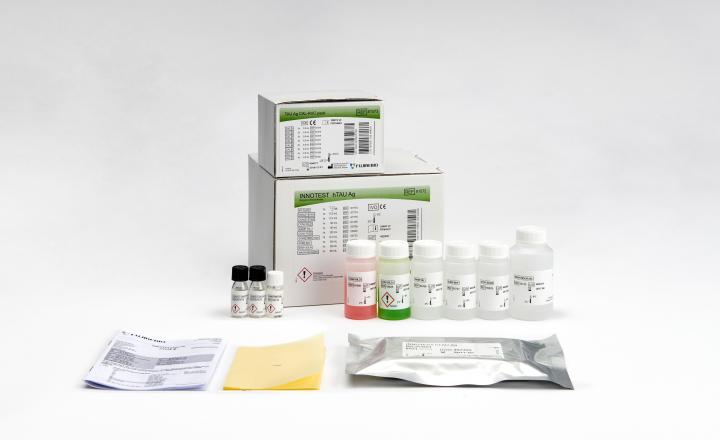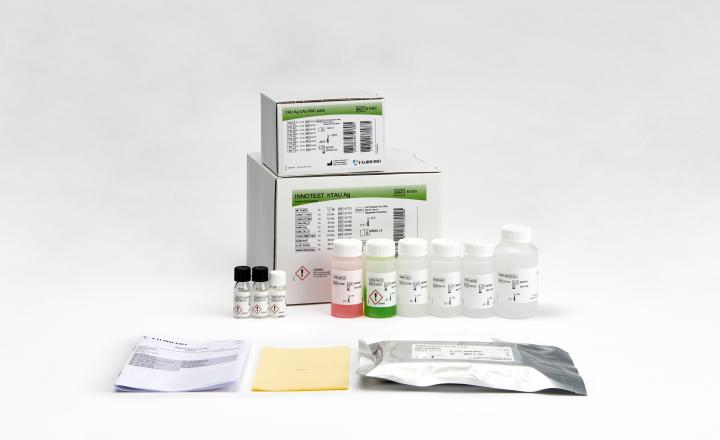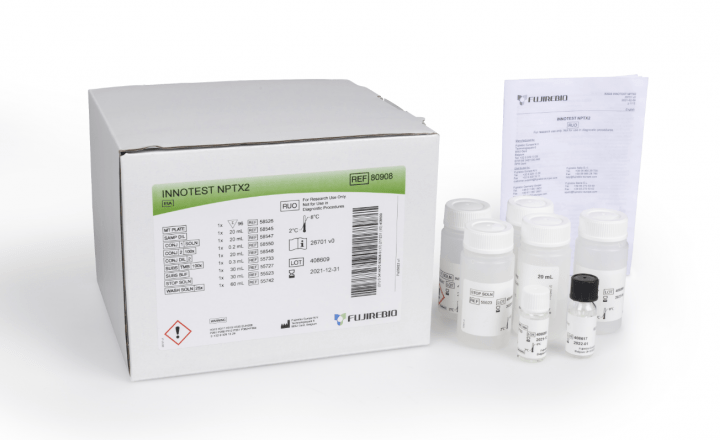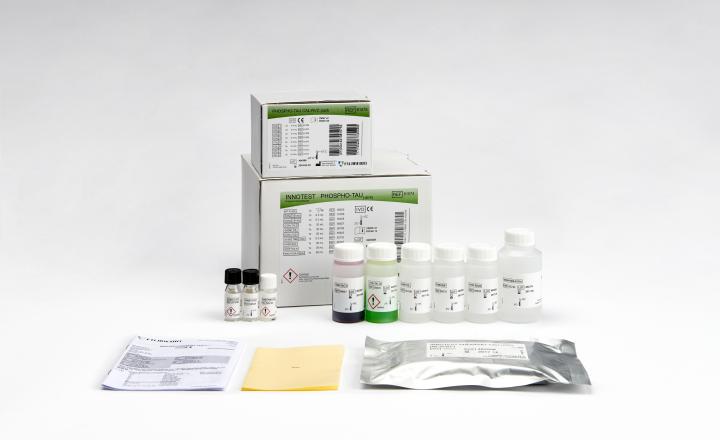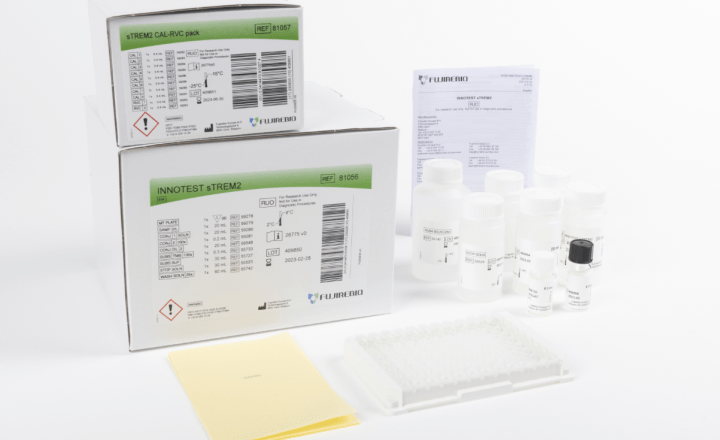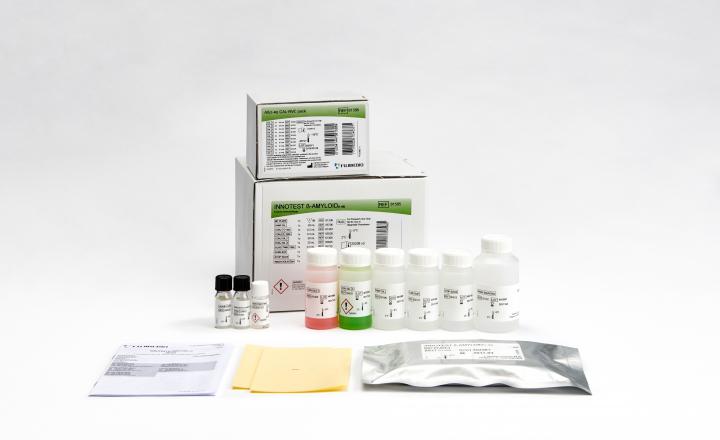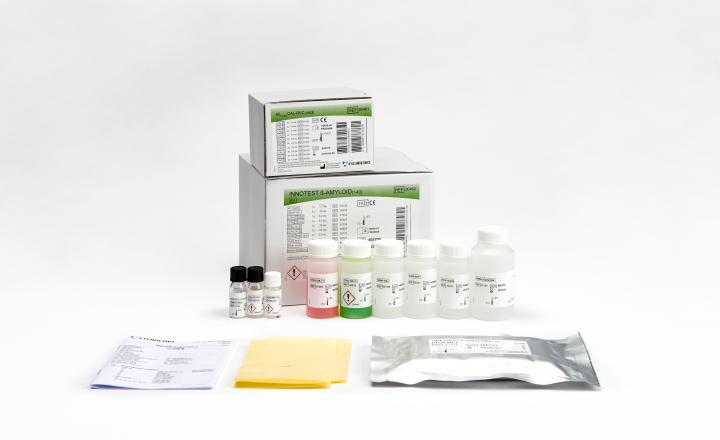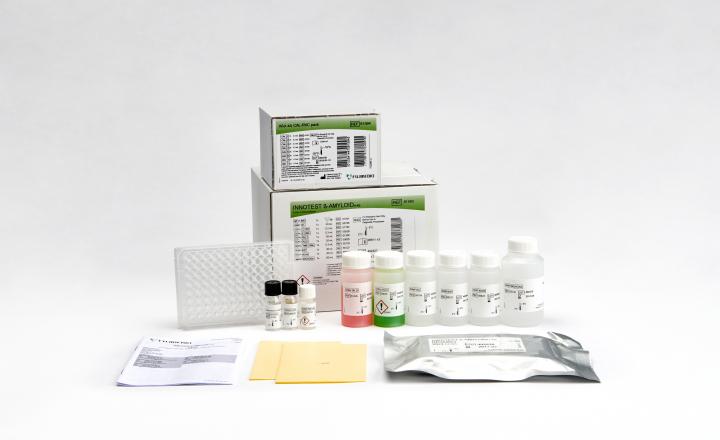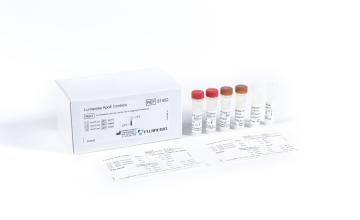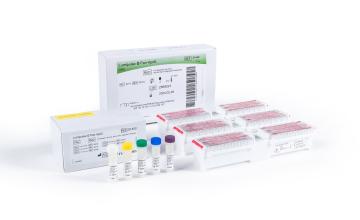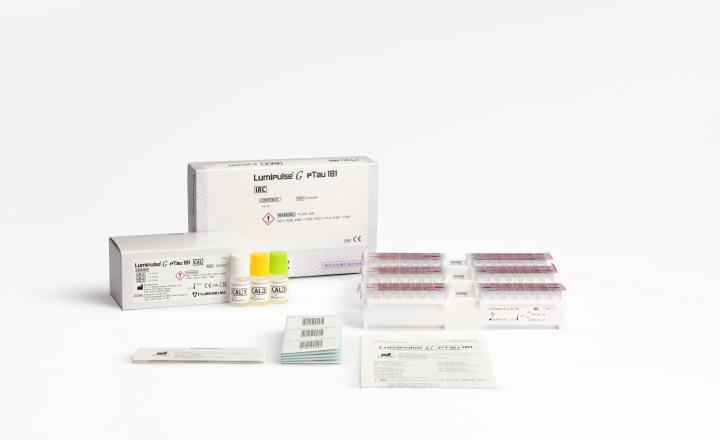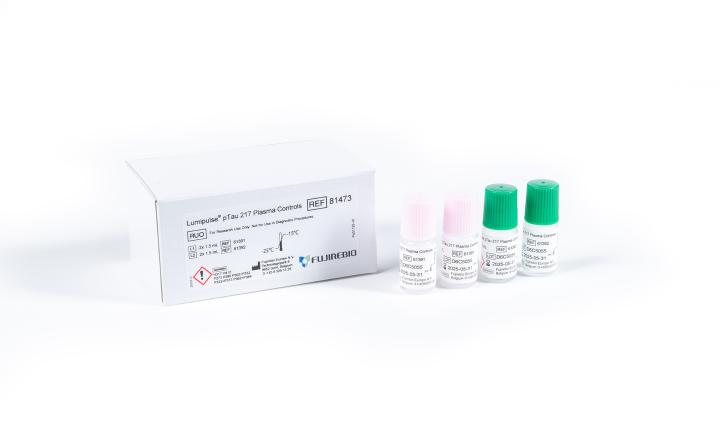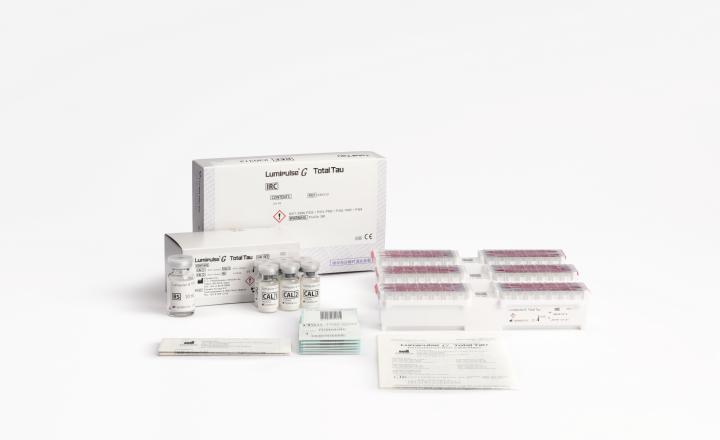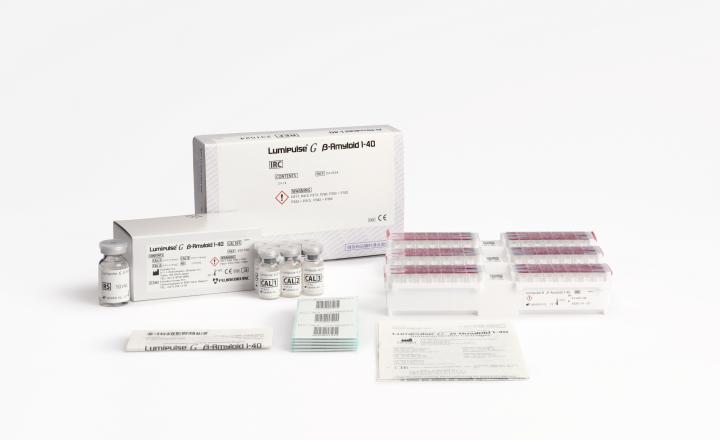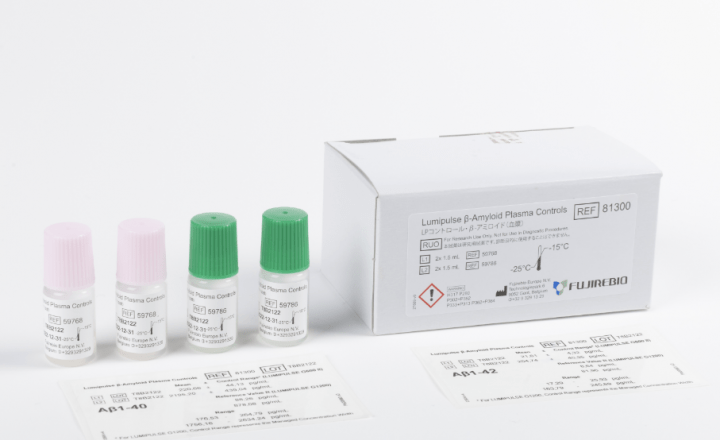Pioneros en el diagnóstico fiable del alzhéimer precoz
Los marcadores en el líquido cefalorraquídeo (LCR), que Fujirebio desarrolló por primera vez hace más de 25 años, han ido evolucionando con el paso del tiempo desde marcadores de investigación a herramientas de diagnóstico especializadas, y desde un uso inicial manual hasta una implementación generalizada en los sistemas de pruebas rutinarias totalmente automatizadas de la actualidad.
El diagnóstico del alzhéimer con muestras de LCR permite detectar cuatro proteínas: dos formas de proteínas amiloides (Aβ1-42 y Aβ1-40) y dos formas de proteínas tau (tau total y fosfo-tau). Si un paciente tiene alzhéimer, presentará unos niveles excepcionalmente bajos de las primeras (razón Aβ1-42 y Aβ1-42/Aβ1-40) y altos de las segundas (tau total y fosfo-tau). Los niveles de Aβ1-42 y la razón Aβ1-42/Aβ1-40 aparecerán bastante antes de que empiecen a apreciarse los síntomas de la enfermedad de Alzheimer.
En la comunidad internacional actual, existen grandes esperanzas de poder usar análisis de sangre para realizar pruebas aún más sencillas de detección precoz del alzhéimer y, con suerte, más generalizadas en la rutina clínica encargada de la enfermedad de Alzheimer. Fujirebio ya tiene disponibles biomarcadores en plasma para las dos proteínas amiloides (Aβ1-42 y Aβ1-40) y para la proteína fosfo-tau, que se pueden utilizar en pruebas automatizadas (solo para investigación). No obstante, el Centro de Excelencia de Investigación Neuronal de Fujirebio continua con investigaciones que han derivado, por ejemplo, en la puesta en marcha de nuevos ensayos para dos biomarcadores prometedores para el alzhéimer, NPTX2 y sTREM2, ambos restringidos a un uso exclusivo para investigación.
En esta página se recopilan recursos e información sobre la contribución de Fujirebio y sus colaboraciones con la comunidad clínica internacional y organizaciones asociadas para desarrollar herramientas de diagnóstico de enfermedades neurodegenerativas en el futuro.
La historia de Daniel y Sophia sobre la vida con la enfermedad de Alzheimer
En este vídeo seguimos a Daniel y Sophia, de Suecia. A Daniel le diagnosticaron la enfermedad de Alzheimer cuando aún tenía poco más de 50 años. Él y su mujer comparten su historia, desde la primera sospecha hasta el diagnóstico precoz y cómo viven ellos y la familia con la enfermedad. Y sus esperanzas para el futuro.
1. World Alzheimer Report 2015
Lea más sobre nuestro compromiso con el avance de las pruebas de la enfermedad de Alzheimer a continuación o póngase en contacto con nosotros hoy mismo.
Insights
Publication - Serum and cerebrospinal fluid neurofilament light chains measured by SIMOA™, Ella™, and Lumipulse™ in multiple sclerosis naïve patients
We would like to draw your attention to a first publication on our Lumipulse® G NfL solution. In this article you will find a method comparison of CSF...
CTAD 2023 – Spotlight on recent advances in blood-based biomarkers for Alzheimer’s disease
Both fluid and imaging biomarkers provide biological evidence for the underlying etiology of cognitive impairment. The core fluid biomarkers of...
IVDR status update for Fujirebio’s Neuro products
The European CE-marking is used to support registrations of in vitro diagnostic (IVD) medical devices in many jurisdictions around the world. The...
Scientific poster - Blood sample matrix validation, impact of sample freezing and method comparison analysis using the Lumipulse® G NfL blood prototype assay
This AD/PD 2023 poster investigates the agreement between matched serum and plasma samples on the Lumipulse G NfL Blood prototype assay, the impact of...
Video - A neurochemist's search to save memories
Meet Dr. Charlotte Teunissen, Professor in Neurochemistry, and her lifelong friend Christa Reinhoudt, who was diagnosed with Alzheimer's disease in...
Scientific poster - Analytical performance of the Lumipulse® G NfL CSF <RUO>
Poster presented at the AD/PD 2023
This AD/PD 2023 poster wishes to demonstrate the analytical performance of the newly developed Lumipulse G NfL CSF...
Scientific poster - CSF pTau181/Aβ1-42 ratio increases pre-analytical variability over measuring Aβ1-42 alone
In this CTAD 2022 poster, we examine the utility of CSF biomarker ratios to correct for pre-analytical variability.
Scientific poster - A fully automated and scalable plasma pTau181 assay for Alzheimer's disease
In this article, the diagnostic performance of a modified version of the Lumipulse G pTau181 CSF test is evaluated.
Scientific Poster - In an Optimized CSF Collection Protocol the pTau181/Aβ1-42 Ratio Increases Preanalytical Variability Over Measuring Aβ1-42 Alone
Background
Core cerebrospinal fluid (CSF) biomarker concentrations for β-amyloid1-42 (Aβ1-
42), β-amyloid1-40 (Aβ1-40), and pTau181 are valuable in...
New criteria for Alzheimer’s disease
New criteria for different stages of AD have been suggested by the International Working Group (IWG) and the National Institute on Aging-Alzheimer’s...
Scientific Poster - Reducing Misdiagnosis of Alzheimer’s Disease Pathology Utilizing CSF and Amyloid PET
Background
Utilizingcognitivetestsalone,includingtheMini-MentalStateExamination(MMSE)ortheMontrealCognitiveAssessment(MoCA)...
Scientific Poster - Prediction of Amyloid PET Status Using the Lumipulse G β Amyloid Ratio (1-42/1-40)
Background
Cerebrospinal fluid ( amyloid biomarker concentrations are valuable
in the assessment of patients for Alzheimer’s dementia ( Automated...
Scientific Poster - Clinical Validation of the Lumipulse® G β-Amyloid Ratio (1-42/1-40) in a Subset of ADNI CSF Samples
Background
The CSF Lumipulse G β-Amyloid Ratio (1-42/1-40)1 provides a potential
alternative to amyloid PET testing for patients with cognitive...
Scientific Poster - A fully Automated Method That Combines CSF Concentrations of Lumipulse G β-Amyloid 1-42 and 1-40 Into a Numerical Ratio
Study Objective
The aim of this study was to analytically verify the Lumipulse G
β-Amyloid Ratio (1-42/1-40) assay and evaluate performance of
the...
Scientific Poster - Pre-analytics of the Aβ1-42/Aβ1-40 Ratio in Fresh and Frozen Samples Using an Optimized CSF Collection Protocol
Background
Cerebrospinal fluid (CSF) biomarkers β-amyloid1-42 (Aβ1-42) and β-amyloid1-40 (Aβ1-40)
have shown high concordance with amyloid PET when...
Aβ deposition and clearance: a key feature of the ageing brain
This chapter looks closer at Aβ deposition and clearance as key feature of ageing brain.
Scientific poster - Analytical performance overview of the Lumipulse® G pTau 181 Plasma RUO assay
The aim of the study, presented at the AAIC 2022, was to determine the performance of several analytical parameters, including amongst others...
Scientific poster - Analytical performance of the Lumipulse® G β-Amyloid 1-40 Plasma and Lumipulse® G β-Amyloid 1-42 Plasma RUO assays
The aim of the study, presented at the AAIC 2022, was to determine the performance of several analytical parameters, including amongst others...
Scientific poster - Reducing misdiagnosis of Alzheimer’s disease pathology utilizing CSF and amyloid PET
In this poster we examine the performance of cognitive testing alone for identification of amyloid positivity in MCI patients from the ADNI study when...
The evolution of Alzheimer's disease diagnosis
By Rianne Esquivel, PhD and Francesca I. De Simone, PhD
Alzheimer’s disease (AD) is the most common cause of dementia in the elderly and is...
CSF biochemical pattern interpretation
What are some of the best-practices of CSF biochemical pattern interpretation? In this article series we aim at highlighting the current state of...
Handling and transportation of CSF samples
Cerebrospinal fluid (CSF) can be collected in the lumbar region by an experienced physician. This article details the recommended procedure for...
How to perform a lumbar puncture
In this article series we aim at highlighting the current state of knowledge and the latest developments in the field of Alzheimer’s disease (AD)...
Using CSF biomarkers to link pathology and clinical presentation
In this article series we aim at highlighting the current state of knowledge and the latest developments in the field of Alzheimer’s disease (AD)...
Video - A day at the Fujirebio Neuro Center of Excellence
In this short video we show you around at the Fujirebio Neuro Center of Excellence. Right now, expectations are high for the development of blood...
Altered proteins in brain neurodegenerative diseases
In this new article series we aim at highlighting the current state of knowledge and the latest developments in the field of Alzheimer’s disease (AD)...
Improving clinical diagnosis of Alzheimer’s disease: Review of the available literature
In this chapter, we will review available literature on the accuracy of the underlying pathological determinations in mild cognitive impairment (MCI)...
The drawbacks of relying solely on the standard routine clinical examinations and cognitive testing
Many subtypes of disease exist under the umbrella of dementia with Alzheimer’s disease (AD) being the most common. AD-related dementia is...
Testimonial - Value of the β-Amyloid ratio and other CSF biomarkers in the Erlangen Score interpretation algorithm
By Prof. Dr. Piotr Lewczuk - Two groups of established cerebrospinal fluid (CSF) biomarkers reflect two major pathological alterations in Alzheimer's...
Webinar replay - Possible applications for novel CSF biomarkers
At Fujirebio we have been hosting a webinar series with leading expert speakers dedicated to current topics in the field of Alzheimer's disease...
Webinar series - Current topics in Alzheimer's disease diagnostics
We have been hosting a series of 3 webinars with leading expert speakers and dedicated to current topics in the field of Alzheimer's Disease...
Scientific poster - Towards an easy plasma pTau 181 detection
Blood-based Alzheimer’s disease (AD) biomarker testing could be used as a simple, accessible, and scalable approach to help support the diagnosis of...
Video - The interest of automated testing for all four CSF biomarkers
In less than 2 minutes, this video explains the advantages of automated biomarker testing for all four CSF biomarkers, over other available testing...
Webinar replay - Preparing for the future of plasma based Alzheimers disease diagnostics
At Fujirebio we are hosting a webinar series with leading expert speakers dedicated to current topics in the field of Alzheimer's disease diagnostics...
Webinar replay - CSF-based biomarkers to support the diagnosis of Alzheimer’s disease
At Fujirebio we are hosting a webinar series with leading expert speakers dedicated to current topics in the field of Alzheimer's disease diagnostics...
The Fujirebio Neuro Center of Excellence
The Fujirebio Neuro Center of Excellence has been founded with the objective of rising to this challenge. It is a research and development hub focused...
Booklet - First edition of our new clinical booklet "A few drops of insight can lead to an ocean of understanding"
Early diagnosis of Alzheimer's disease is crucial. The desire to tackle neurodegenerative diseases by always finding earlier diagnostic solutions and...
Video - Ratio calculation of Aβ1-42 and Aβ1-40 offers essential information about the buildup of amyloid pathology in a patient's brain
This 2 minute video explains why and how a ratio calculation of the two amyloid proteins, Aβ1-42 and Aβ1-40, offers particularly essential information...
Video - Daniel's story about his early testing and diagnosis of Alzheimers disease
Daniel lives in Stockholm, Sweden, and was diagnosed with Alzheimer’s disease when he was still in his early 50's. In this 6-minute video we follow...
Comparison of Aβ1-42/Aβ1-40 ratio with other ratios
CSF Aβ1-42/Aβ1-40 is a tool thought to normalize atypical amyloid levels, whereas other ratios might be seen more as interpretation tools that allow...
The role of Aβ1- 40 in the Aβ1-42/Aβ1- 40 ratio
Aβ1-40 is the most abundant amyloid peptide in CSF, while Aβ1-42 accounts for only about 10% of the total Aβ peptide population.15 Total Aβ...
Aβ1-42/Aβ1-40 ratio to decrease preanalytical variability
- Aβ1-42 adsorption to plastic is a relevant preanalytical factor in laboratory practice.
- Adsorption to plastic seems to affect different Aβ isoforms...
Association between the CSF Aβ1- 42/Aβ1-40 ratio and amyloid PET
Most studies have found a strong association between CSF Aβ1-42 and amyloid PET measurements. However, in these studies, 10–20% of healthy individuals...
Understanding the Aβ1-42/Aβ1-40 ratio in relation to Alzheimer’s Disease
CSF Aβ1-42/Aβ1-40 ratio as a potential tool to detect amyloid deposition
Influence of automation on Aβ1-42/Aβ1-40 ratio and its use
Automation is an important step in the direction of more standardization as it limits the number of manual handling steps and therefore minimizes...
Comparison of Aβ1-42/Aβ1-40 ratio with other ratios
CSF Aβ1-42/Aβ1-40 is a tool to normalize values of patients with different amyloid levels, as other ratios might be seen more as interpretation tools...
How to work with Aβ1-42/Aβ1-40 ratio
One cause of discordant results can be the preanalytical conditions, e.g. when laboratories use tubes that bind certain proteins. Aβ1-42 adsorption is...
Improvement of AD risk scores by use of the Aβ1-42/Aβ1-40 ratio
Different scores have been developed to provide an interpretation of biomarker results for AD diagnosis or risk prediction. Here we will give two...
Aβ1-42/Aβ1-40 ratio for interpretation of discordant results
By use of the Aβ1-42/Aβ1-40 ratio, discordant results (i.e. when amyloid and tau biomarkers are not concordant) can be improved. However, while the...
Use of the Aβ1-42/Aβ1-40 ratio to improve accuracy of AD diagnosis
It is widely agreed that, since cerebrospinal fluid (CSF) is in direct contact with the central nervous system (CNS), analytes measured in this body...
What is Alzheimer's disease?
Alzheimer’s disease, which is the most common form of dementia, is an incurable degenerative disease. Neurons in certain parts of the brain are...















